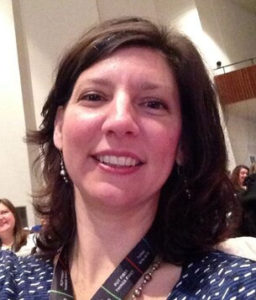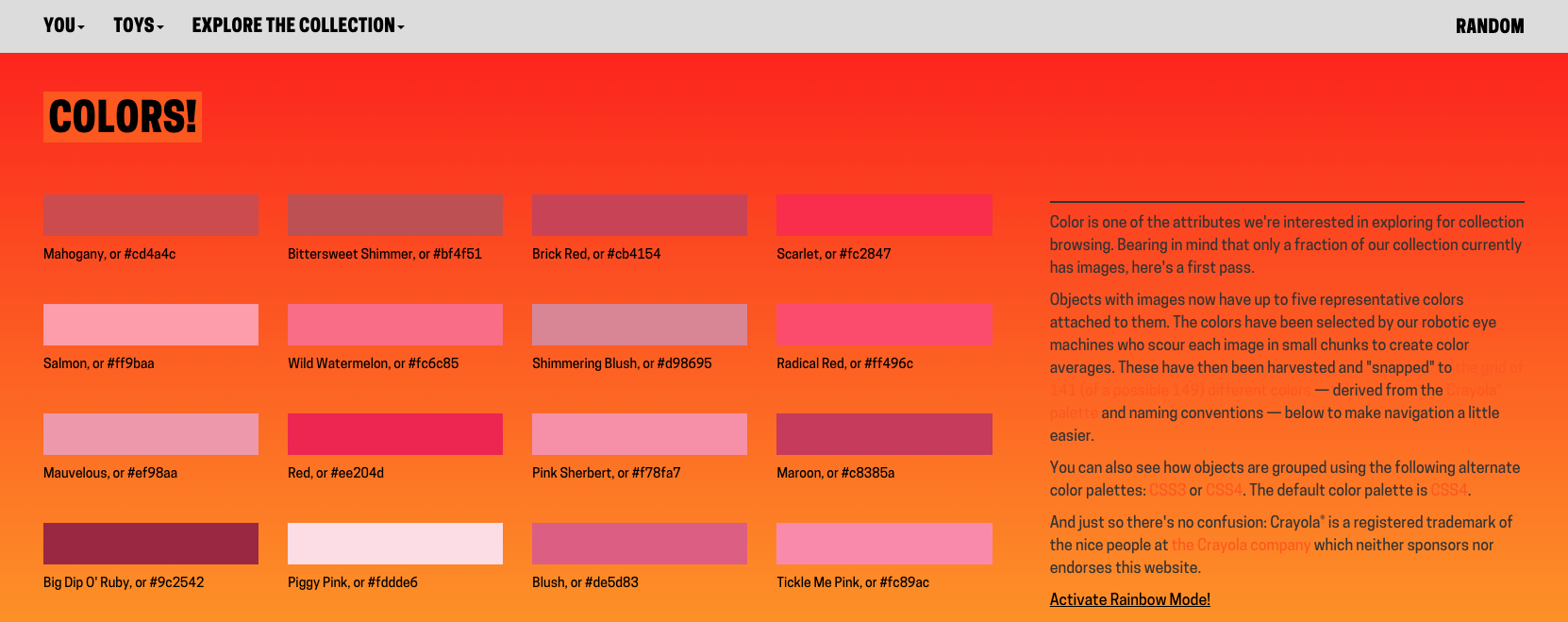As research for the exhibition Saturated: The Allure and Science of Color (May 11, 2018–January 13, 2019), the curators interviewed color specialists working in diverse industries and fields, from fashion forecasting to early childhood education. For our Careers in Color blog series, we asked these specialists to tell us about their work and how their love of color led to a professional career. Kristen Walter is an educator for Crayola.

Kristen Walter, Innovative Teaching and Learning Manager, Crayola
Could you please describe your job in 100 words or fewer?
My official title is Innovative Teaching and Learning Manager, and I work with teachers on developing strategies for using the arts as a vehicle for teaching other subjects. I work with color – but in a very abstract way. We are looking at how students can use the elements of art (including color) to create projects that show their learning in multiple subjects in non-traditional ways. With this idea we are enabling students to use color to express their understanding of all subjects – not just in art class.
How did you come to work in the field of color?
I grew up in a family of artists, and color has always been part of my life. I started out working in music education (aural aesthetics versus visual aesthetics!), and was hired in a school district that offered art or music to students only half the year. So I took art classes and became a certified art teacher, so I could teach both to my students, which I did for many years. My school received a CCCAC (Championing Creatively Alive Children) grant from Crayola, leading to my eventually becoming part of their education team.
What is a color issue you are working on right now?
The color issue I am working on is how teachers can help students to use color to express an idea or extend their understanding of the subject. For example, if a child is designing a poster to re-tell a story, they want to make a conscious decision about using a bold or dominant color for the main idea or most important words. Or if students are working on a lesson on animal adaptations, helping them understanding that color is an important part of design in nature, critical to an animal’s survival.
Tell us about an impactful experience you’ve had with color.
When I was an educator, the most impactful experience I had was when teaching young children color theory and how to “make” secondary colors. I would set the lesson up, so that each child had a “magical” mixing cup. In their magic cup, when they placed two primary colors together it would make the secondary color. The last time I taught this lesson, my kindergarteners were leaning forward, eyes round and not a sound in the room as I put a dab of blue and a dab of red in the cup – and when I lifted my brush from the “magic” cup to paint a purple line on the board – all 32 children spontaneously jumped to their feet to cheer and clap – they couldn’t wait to make their own colors. Color is magical – it can make us feel joyful or calm or sad or happy. Giving the power of creating colors to children is very moving.
With the increase in screen-based activities for kids, do they have different expectations of color?
We embrace the technological future and see the one constant as devices and apps change is creativity. In education, we talk about how creativity, collaboration, critical thinking and communication are the goals of using technology- and color expression is a big part of that. We look at creativity and critical thinking as the why, and technology as the how.
In addition, many of our products now encourage digital creativity. We want kids to explore, color, and imagine in any medium they choose. Our purpose at Crayola is to help parents and teachers raise creative and inspired kids. We need to reach them where they play, that means also offering digital options for them to choose in addition to our traditional art tools.
What is Crayola’s process for naming colors? Tell us about the survey for the naming of the new blue crayon.
Most Crayola color names are taken from the U.S. Commerce Department’s National Bureau of Standards book called “Color: Universal Language and Dictionary of Names.” Many crayon names are also borrowed from traditional artists’ paints, some are named by employees, and a few kids and kids at heart (consumers) have earned the distinction of naming a Crayola Crayon! In fact, 67 names have been made registered trademarks of Crayola by the US Patent & Trademark Office.
We received 90,000 name submissions for the new blue crayon. In September 2017, after two months of fan deliberation, Crayola announced “Bluetiful” as its name, with an astounding 40 percent of consumer votes. Bluetiful will be the nineteenth active blue color, replacing the previously retired Dandelion. The Crayola Color Census 2000 revealed that out of 120 different colors, blue ranked #1. Six shades of blue, including cerulean, midnight blue, periwinkle, aquamarine, denim and cornflower made the Top 10. Least favorite? Tan, tumbleweed and yellow green.

One thought on “Careers in Color: Crayola”
Carol Moore on February 17, 2021 at 5:43 am
How inspiring you are! I am a 15th year teacher in special education. I am looking to leave the “formal” teaching profession. I have a BS in design with a minor in science, along with a teaching certification in elementary special education. Previous to teaching I worked in commercial design as an interior designer. Color excites me & my focus for myself now is to pursue what makes my heart happy, for it is there where my child still exists. If you have a position available to which I would be well suited, I would be so honored to be a part of Crayola. Please consider contacting me, I would love to talk with you! Thank you! Ms. Moore